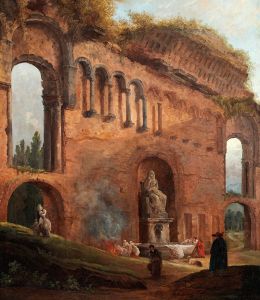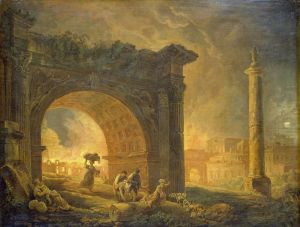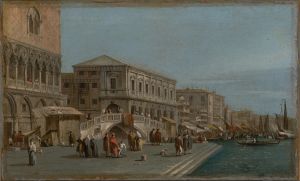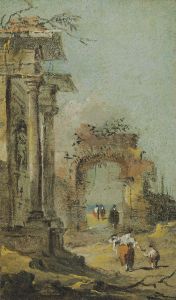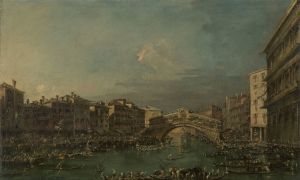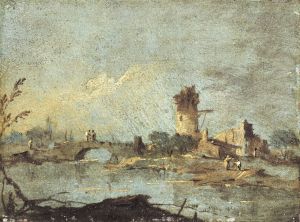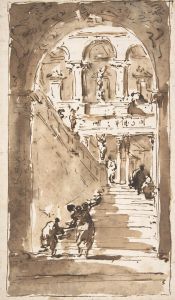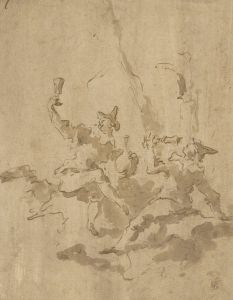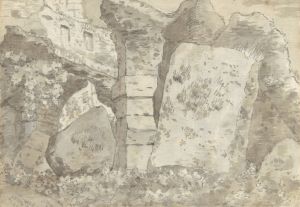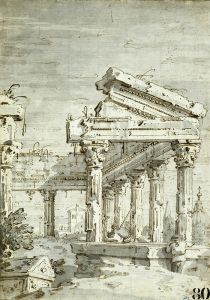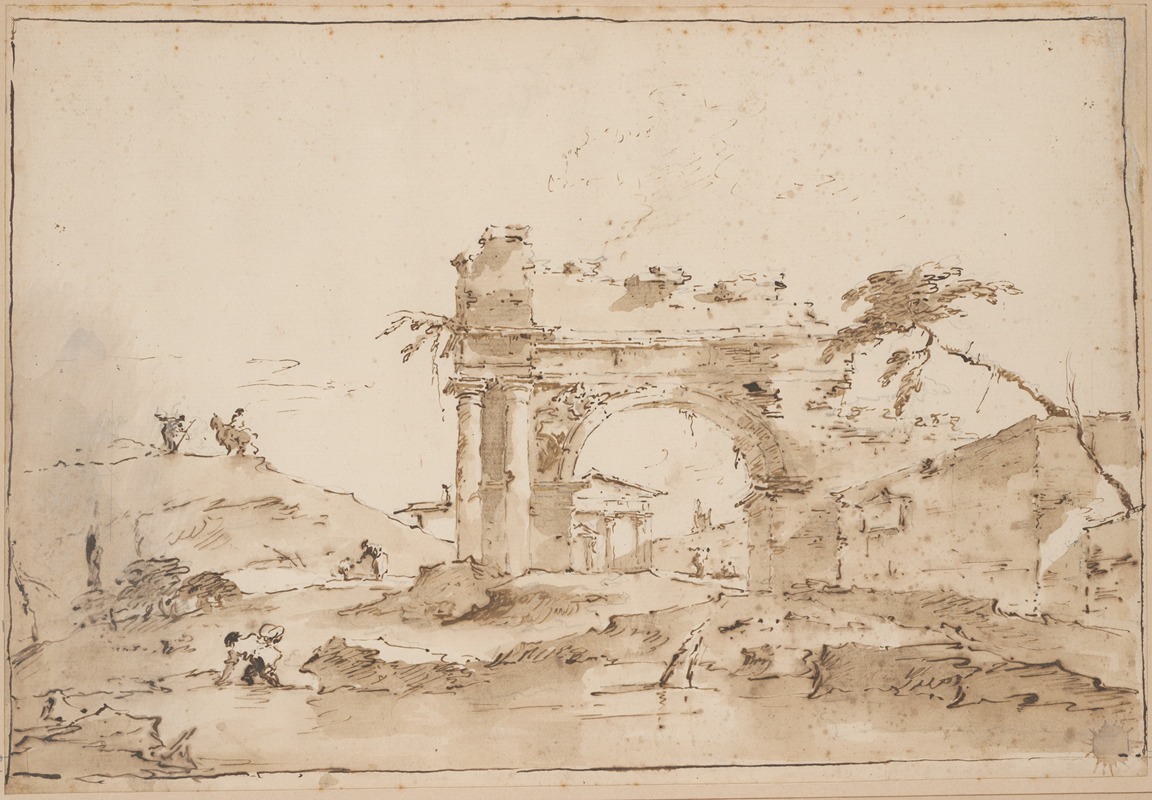
Capriccio with Roman Ruins
A hand-painted replica of Francesco Guardi’s masterpiece Capriccio with Roman Ruins, meticulously crafted by professional artists to capture the true essence of the original. Each piece is created with museum-quality canvas and rare mineral pigments, carefully painted by experienced artists with delicate brushstrokes and rich, layered colors to perfectly recreate the texture of the original artwork. Unlike machine-printed reproductions, this hand-painted version brings the painting to life, infused with the artist’s emotions and skill in every stroke. Whether for personal collection or home decoration, it instantly elevates the artistic atmosphere of any space.
Francesco Guardi's Capriccio with Roman Ruins is a painting that exemplifies the Venetian artist's skill in creating imaginative architectural landscapes, known as capricci. Guardi, a prominent figure of the Venetian school in the 18th century, was renowned for his vedute (view paintings) and capricci, which often combined real and imagined architectural elements to evoke a sense of grandeur and nostalgia.
This particular work, Capriccio with Roman Ruins, depicts a fantastical arrangement of classical Roman ruins, including elements such as columns, arches, and fragments of ancient structures. The painting does not represent a specific real-world location but instead serves as an idealized vision of a Roman past, reflecting the 18th-century fascination with antiquity and the romanticized view of ancient Rome. Guardi's use of light and shadow, along with his loose, expressive brushwork, creates a dreamlike atmosphere that enhances the imaginative quality of the scene.
The painting is characteristic of Guardi's later works, where his style became more fluid and atmospheric, moving away from the precise detail of earlier Venetian vedutisti like Canaletto. Guardi's capricci were less concerned with architectural accuracy and more focused on mood and composition, often incorporating figures to add a sense of scale and narrative to the scene.
The exact date of creation for Capriccio with Roman Ruins is not definitively documented, but it is generally attributed to the latter part of Guardi's career, when he increasingly turned to capricci as a form of artistic expression. The painting is an example of the broader European interest in the ruins of antiquity during the 18th century, a period when the Grand Tour and archaeological discoveries fueled a renewed appreciation for classical art and architecture.
Today, Capriccio with Roman Ruins is recognized as a significant example of Guardi's imaginative approach to landscape painting. The work is held in a private collection or museum, though its current location is not widely documented in public records. Guardi's capricci continue to be celebrated for their ability to transport viewers to a poetic and timeless vision of the past, blending reality and fantasy in a uniquely Venetian manner.





